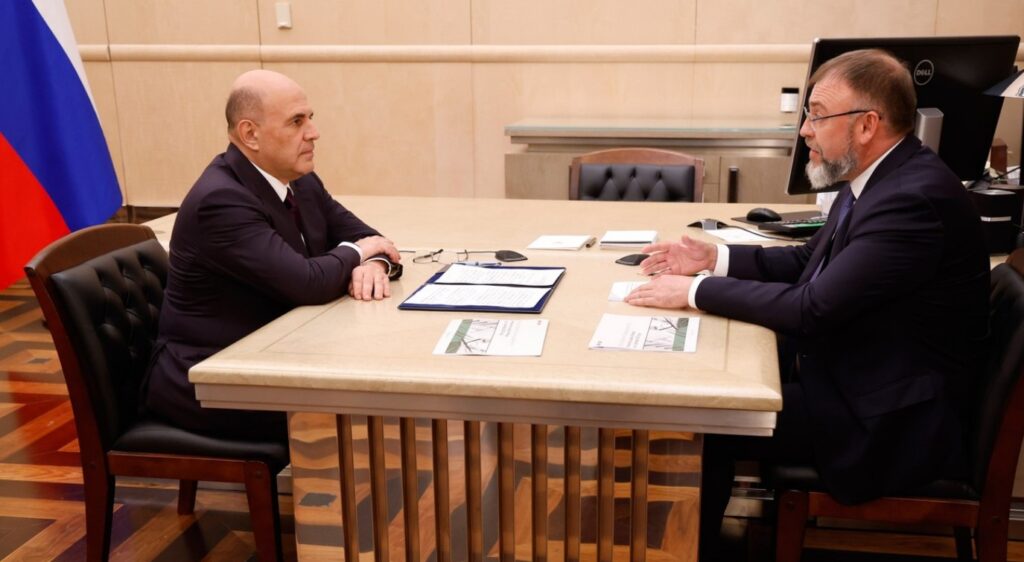MOSCOW (Realist English). Russian Prime Minister Mikhail Mishustin met on Tuesday with Roman Petruça, Director of the Industry Development Fund (FRP), to review the fund’s performance and its role in achieving the country’s technological and industrial sovereignty.
Speaking at the House of Government, Mishustin highlighted the importance of the FRP as a key development institution. “Many projects have been supported by the Fund — in machine tool building, mechanical engineering, manufacturing, chemistry and pharmaceuticals. These are areas where Russia is addressing questions of sovereignty and building its domestic industrial base,” he said.
Petruça reported that in August the Fund surpassed 2,000 loans issued since its creation, channeling around ₽700 billion ($7.5 billion) into industry over the past decade. “Every third ruble has already been repaid and reinvested, creating a third investment cycle. In 2025 alone we have about ₽100 billion at our disposal, most of it recycled from earlier projects,” he said.
According to Petruça, the FRP has helped launch or modernize more than 1,000 production facilities, with one in two projects already entering serial output. This year the Fund expects to support more than 300 new projects, up from an annual average of 250–280. Problem loans make up just 1 percent of the portfolio.
The Fund’s projects have attracted around ₽500 billion in private investment and generated some ₽300 billion in tax revenues at all budget levels. “For every ruble financed by the Fund, 70 kopecks have already been returned to the state,” Petruça said, stressing that the Fund’s capital remains intact.
National priorities and innovation
Mishustin pressed Petruça on the Fund’s contribution to research and innovation, noting the government’s increased spending on R&D. Petruça said clients of the Fund had submitted more than 800 applications for intellectual property, two-thirds of which resulted in new patents and models, mainly in machine building, pharmaceuticals and other high-tech industries.
He cited examples including:
- OrenClip’s Orenburg plant, producing robotic equipment for the food industry;
- Russilica’s project in Nizhny Novgorod region, worth ₽21 billion, supplying chemical components to 23 industrial sectors, with ₽5 billion from the FRP;
- Cyberstal in Sverdlovsk region, launching seamless stainless-steel pipe production vital for nuclear energy, with ₽5.2 billion in FRP financing;
- Ural plant projects, including new casting facilities and localized truck components to strengthen domestic supply chains.
Beyond loans, the FRP also acts as an expert body in the cluster investment platform, together with the Ministry of Industry and Trade and the banking sector. This instrument has already approved more than 60 major projects worth over ₽1 trillion, with financing ranging from ₽2 billion to ₽100 billion per project.
Strategic context
Petruça emphasized that over 40 percent of the Fund’s portfolio is in engineering, particularly transport, followed by chemistry and pharmaceuticals. In August, the Fund’s supervisory board prioritized resources for projects producing goods included in Russia’s technological sovereignty roadmap.
Mishustin concluded the meeting by stressing the strategic role of the FRP: “In the coming years, the Fund must focus on technological and industrial sovereignty, as set by the President. These goals must be achieved — creating jobs, fostering new competencies, and building a modern domestic industrial base.”
